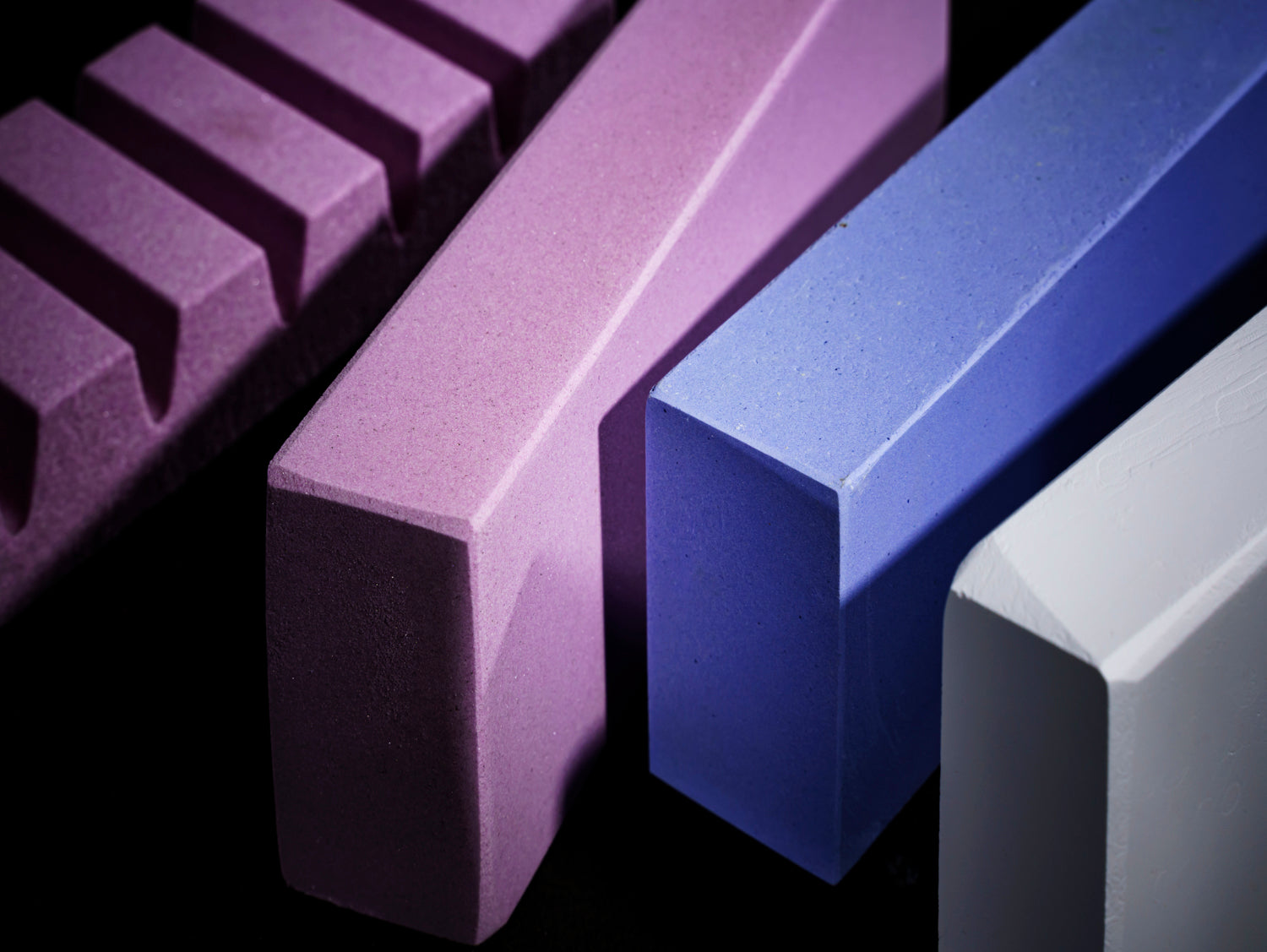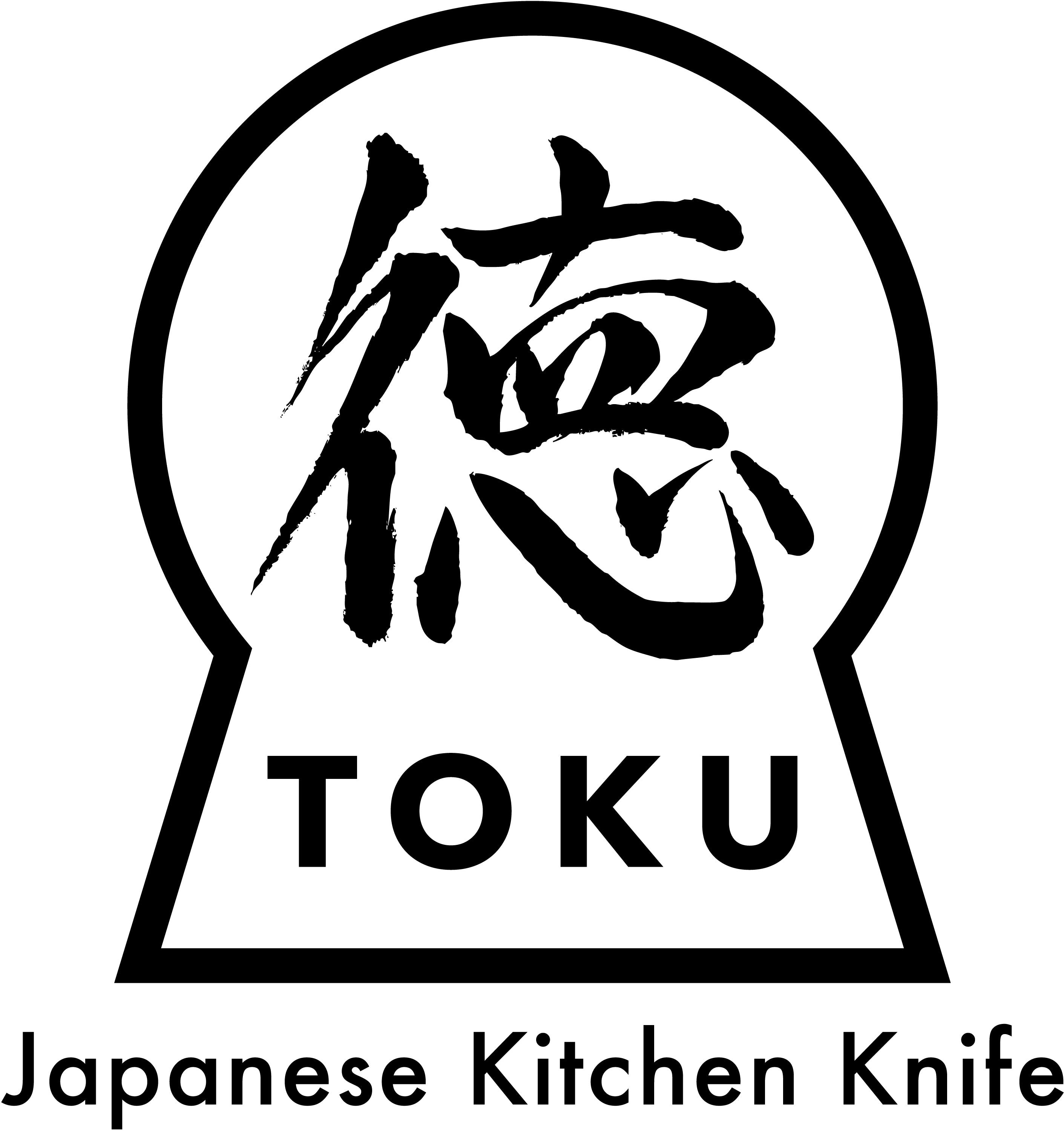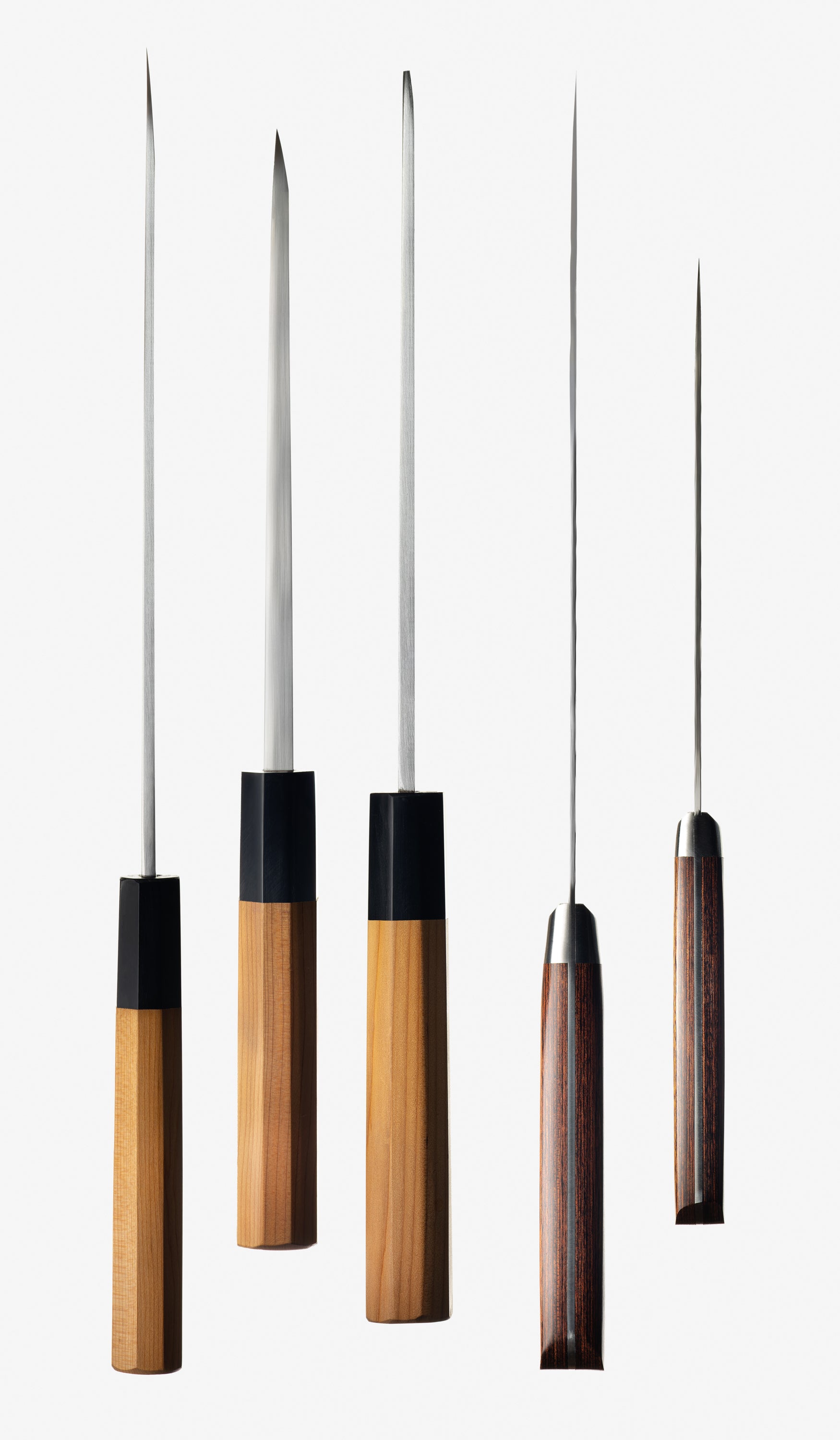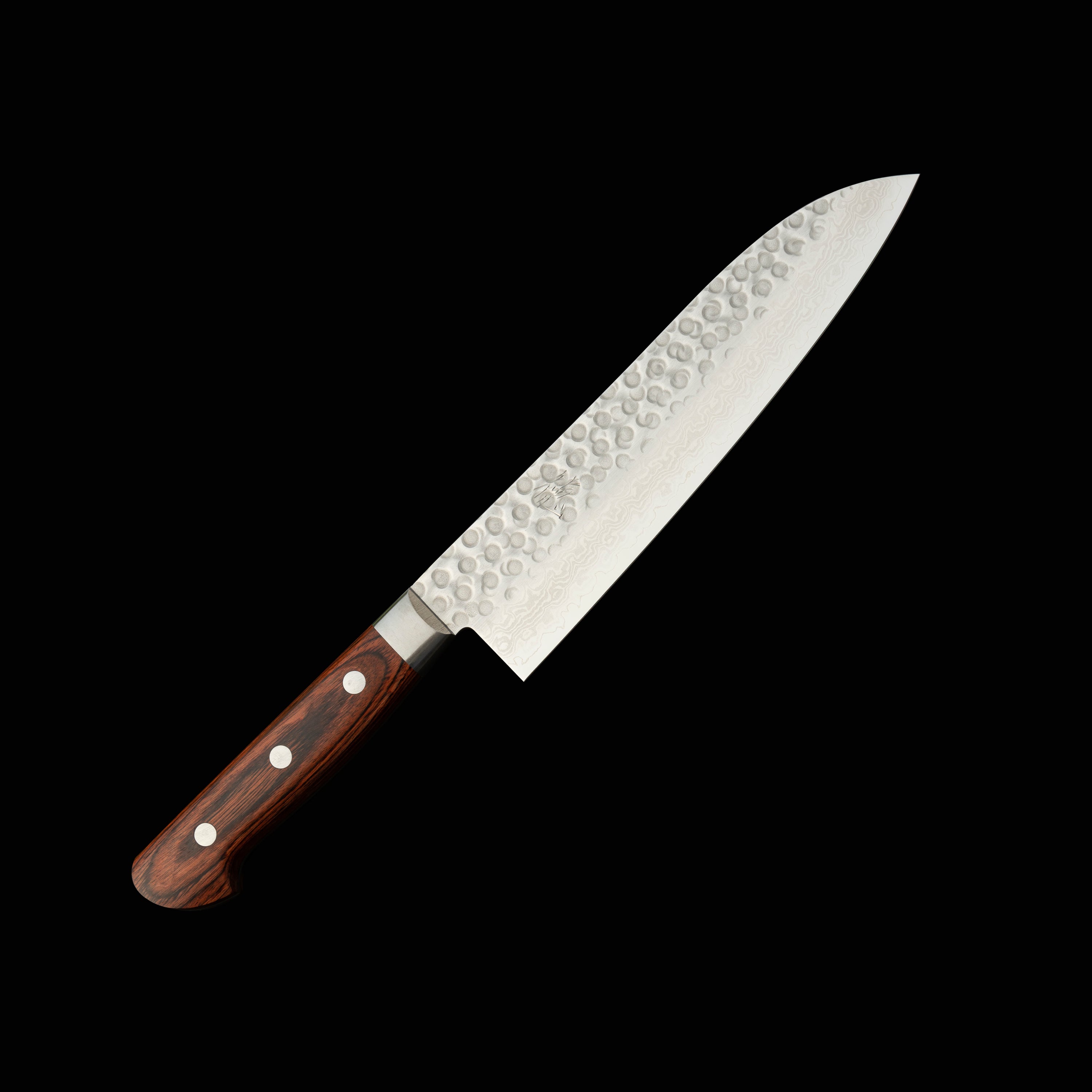
[2024] Recommended whetstones for resharpening knives
I am Okudaira, the owner of "Japanese Kitchen Knife TOKU''.
Thank you for your continued support of "Japanese Kitchen Knife TOKU'' this year as well.
We want to sell knives made in our hometown of Sakai, Osaka, so we purchase and sell knives made in Sakai from a knife manufacturer in Sakai.
We don't just sell knives, we visit a number of blacksmiths and bladesmiths in Sakai to help our customers understand knives, experience the actual work, and hear from the craftsmen. I'm here. In addition to Sakai, we also visit Seki in Gifu, Tsubame-Sanjo in Niigata, Tanegashima in Kagoshima and Katsushika in Tokyo, in an effort to deepen our understanding of the characteristics and commitment of each.
Which whetstone is recommended for resharpening a knife?
What do you do when your knife becomes dull?
Some people may say, "I haven't bought anything that good, so I'm replacing it."
But didn't you feel attached to the knife you've been using for many years and want to continue using it?
If you want to use the same knife for a long time, you will need to resharpen it.
What you need in such a case is a whetstone and sharpener.
There are sharpeners that pass the knife through a tool, and sharpeners that hold the knife blade against a metal bar, but this time I would like to talk about whetstones.
There are four main types of whetstones
There are four main types of whetstones.
①Rough whetstone
② Medium whetstone
③Finishing whetstone
④Correction whetstone
First, let's take a look at the rough whetstone.
①Rough whetstone
A rough whetstone is used to sharpen a knife to a large extent, such as when a knife is severely chipped or when the edge of the knife has become thick due to long-term use, such as when thinning a shinogi knife.
Some of you may be wondering, "What part of the blade or shinogi are you talking about?" So, to put it simply, I hope you understand that it is a whetstone used to shape a knife.
In terms of surface roughness, it refers to #200 to #600.
② Medium whetstone
The whetstone used for resharpening at home is a medium whetstone. Used to repair knives with small scratches or dullness.
In terms of surface roughness, it refers to #800 to #2000.
③Finishing whetstone
I think few people have a finishing whetstone at home, but it is used to sharpen knives sharpened with a medium whetstone or to add a small blade (thread blade).
I will explain the small blade (thread blade) in another blog.
In terms of surface roughness, it refers to #2000 or higher.
④Correction whetstone
Many of you may be wondering, "What is a correction whetstone?"
A correction whetstone is a whetstone used to flatten the surface of a whetstone.
When you sharpen a knife with a whetstone, the sharpened area becomes indented. Even if you sharpen the knife in a dented state, the knife will not sharpen properly. Therefore, it is necessary to use a correction whetstone to flatten the surface of the whetstone. If you go to the supermarket or home improvement store you frequent, you'll probably only find one or two of these grindstones, so it's no wonder that many people have never seen them in the first place.
However, it is definitely necessary if you want to sharpen your knife, so I highly recommend purchasing one.
Material of whetstone
I learned that there are four types of whetstones.
Some of you may be wondering, "But what are whetstones made of?"
There are two types of whetstones: artificial whetstones and natural whetstones.
Artificial whetstones are, as the name suggests, artificially made by humans.
The most common types are vitrified, resinoid, and magnesia.
Vitrified is a whetstone that uses clay, glass, etc. as raw materials and is fired at a high temperature of 1200 to 1300 degrees.
Resinoid is made by using a thermosetting resin such as phenolic resin or epoxy resin as a binder and curing it at a temperature of about 200℃.
Magnesia uses a type of cement (magnesia cement) made of magnesium oxide and magnesium chloride as a binder, which hardens through a chemical reaction.
Vitrified must be soaked in water for about 10 minutes before use. Magnesia does not need to be soaked in water, and can be started by simply adding water, but if it is soaked in water for a long time, it may crack or lose its hardness.
In addition, there are electrodeposited whetstones, which have diamond or other abrasive grains electrodeposited on metal.
Artificial whetstones have stable quality and can be mass-produced, so they can be purchased at relatively low prices.
Most of the whetstones sold at supermarkets and home centers are artificial whetstones.
Natural whetstones are natural whetstones that are mined from various mountains.
Coarse whetstones and medium whetstones are produced all over the mountains.
As for rough whetstones, Omurato from Saga Prefecture and Wakayama Prefecture is used. Medium-sized whetstones include Iyoto from Ehime Prefecture, Aoto from Kyoto Prefecture, Amakusato from Kumamoto Prefecture, Numatato from Gunma Prefecture, and Mikawa Shiranakurato from Aichi Prefecture. As for finishing whetstones, Awaseto in Kyoto Prefecture has been called Narutakito since ancient times and is very famous as a finishing whetstone, among which Nakayamato is considered to be of the highest quality.
Natural whetstones are natural stones that have been mined from geological strata formed by piles of sedimentary rock and tuff over a long period of time, from hundreds of millions of years ago to the present day. The characteristics of the whetstone vary depending on the region where it is mined, and the finish of the sharpening changes accordingly.
The price is higher than that of artificial whetstones because the quantity of mined stones is decreasing due to inconsistent quality and the aging of mining workers and managers.
However, the sharpness and beauty of a sharpened knife cannot be compared to an artificial whetstone!
If you are interested, please try sharpening with a natural whetstone once.
At the Natural Whetstone Museum in Kameoka, Kyoto, you can experience trial sharpening with approximately 200 types of natural whetstones.
If you're in the area, why not try it once?
Natural Whetstone Museum https://www.tennentoishikan.com
Recommendations for choosing a whetstone: What should you choose?
If you are thinking of trying knife sharpening, please purchase a medium whetstone and a correction whetstone.
As for the material of the medium whetstone, if you have a stainless steel knife, you should choose magnesia, and if you have a steel knife, you should choose a vitrified whetstone.
If you already have a medium whetstone, it would be a good idea to add a finishing whetstone. As mentioned above, it is best to choose the material of the whetstone according to the material of the knife you have.
If you already have a whetstone and are resharpening it, but you are not satisfied with the condition of your resharpened knife, why not try using a natural whetstone? There are many different types of natural whetstones, but personally, I think it's best to try using green whetstones.
Let's go to a knife store!
If you don't understand it until you see it, go to a knife store and try holding a knife. However, most stores do not allow you to try cutting the knife, so you cannot check the sharpness before purchasing.
If you don't have a store that sells knives near you, it's best to purchase from a knife specialty store's mail order site.
"Japanese Kitchen Knife TOKU" has a video showing the actual cutting process, so please use it as a reference.
https://www.youtube.com/@japanknifetoku/videos



Leave a comment
This site is protected by hCaptcha and the hCaptcha Privacy Policy and Terms of Service apply.